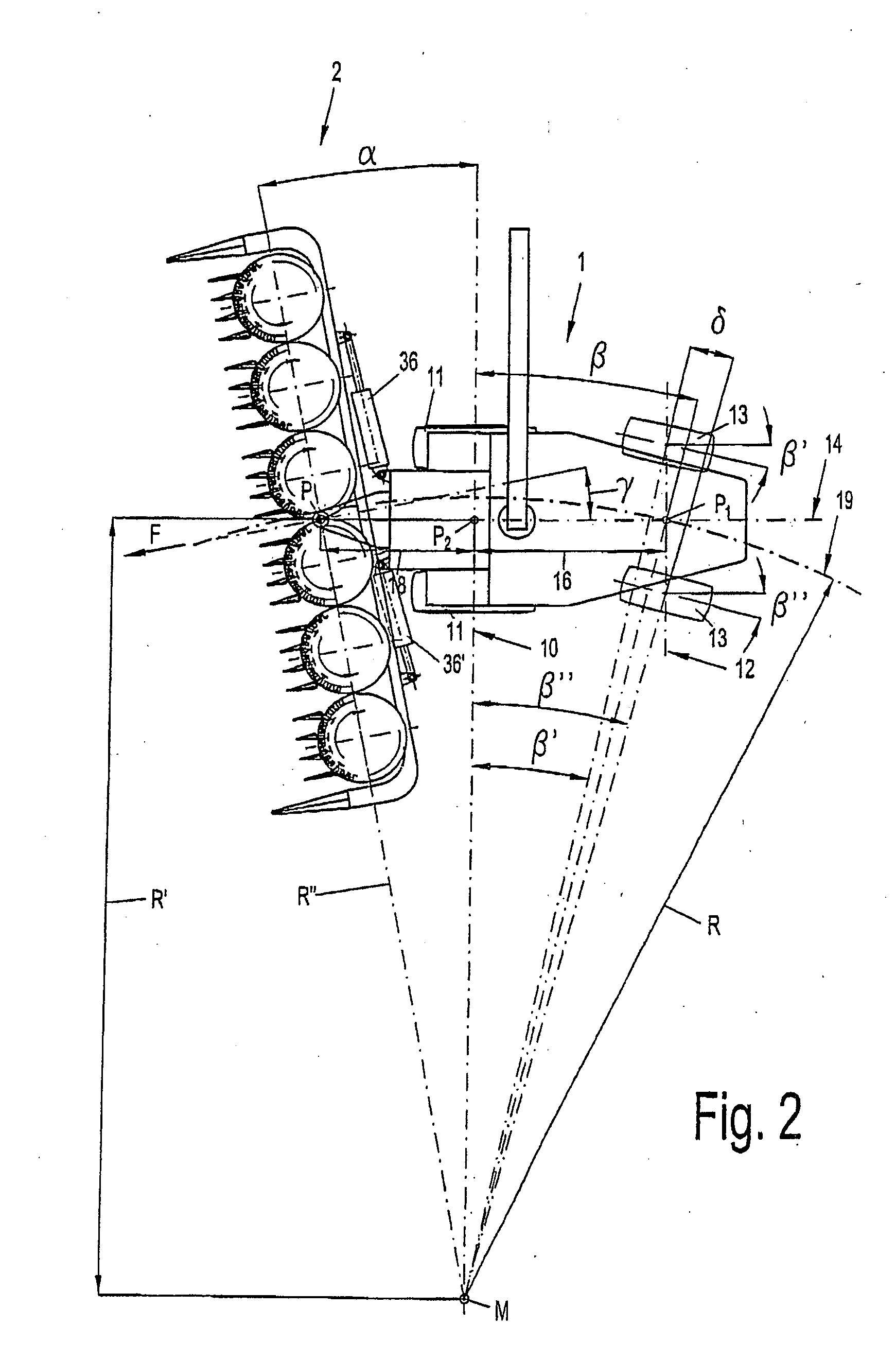Method and device for operating an attachment for harvesting stalk-like crops
a technology of stalk-like crops and attachments, which is applied in the direction of control devices, outside dividers, mowers, etc., can solve the problems of laborious turning maneuvers, increased stubble length, and loss of harvested crops
- Summary
- Abstract
- Description
- Claims
- Application Information
AI Technical Summary
Benefits of technology
Problems solved by technology
Method used
Image
Examples
Embodiment Construction
[0024]FIG. 1 shows a self-propelled harvesting machine according to the present invention in a top plan view, including a carrier vehicle 1, realized as a field chopper with an attachment 2 (corn picker head) which is known for harvesting entire corn plants which, after cutting and further transportation, are supplied to the draw-in gap and are drawn in by the draw-in rollers and are therefore supplied to the chopping drum. The attachment comprises a machine frame 4 with the cutting and conveying rotors 3 which are driven in a revolving manner about upright axis of rotation 8 and have cutter and conveying disks 6, 7 which are arranged coaxially with the axis of rotation 8 and are situated one above the other and are mounted in the machine frame 4. The attachment is outwardly bounded by dividers 5 which are situated partly upstream from and partly next to the outer cutting and conveying rotors, and which at the same time delimit the cutting and working width 15 situated in between. M...
PUM
 Login to View More
Login to View More Abstract
Description
Claims
Application Information
 Login to View More
Login to View More - R&D
- Intellectual Property
- Life Sciences
- Materials
- Tech Scout
- Unparalleled Data Quality
- Higher Quality Content
- 60% Fewer Hallucinations
Browse by: Latest US Patents, China's latest patents, Technical Efficacy Thesaurus, Application Domain, Technology Topic, Popular Technical Reports.
© 2025 PatSnap. All rights reserved.Legal|Privacy policy|Modern Slavery Act Transparency Statement|Sitemap|About US| Contact US: help@patsnap.com



